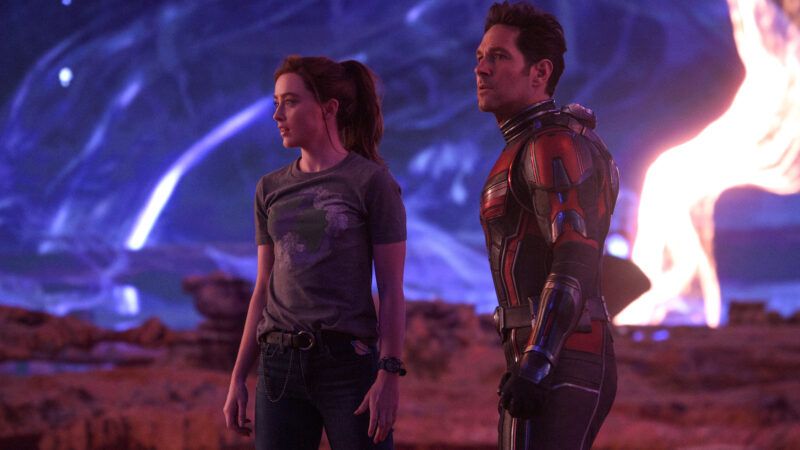Review: Ant-Man and the Wasp: Quantumania
Let’s get smaller.

Ant-Man and the Wasp: Quantumania wants to psych you up about the launch of "Phase Five" of the Marvel Cinematic Universe, a corporate entity that's now 15 years old and starting to look a little winded. Phase Five will naturally be a multimedia delivery system, hauling out the third Guardians of the Galaxy movie, a pair of sequels (Captain Marvel, Captain America), and a bunch of Disney+ TV stuff. Let the endless cross-promoting begin. But not yet.
The first two Ant-Man movies derived most of their charm from Paul Rudd, whose small-scale, nice-guy warmth in the role of Scott Lang/Ant-Man was a welcome downshift from Marvel's usual action-fantasy megalomania. Unfortunately, Rudd is swamped by this third film, which is a boiling neon tsunami of towering blob creatures, walking broccoli stalks, big chrome spiders, Avatar-style hanging sky islands, and much, much more, quite a bit of it either on fire or in the process of being detonated at any given moment.
The story, such as it is, begins in Scott's native San Francisco, where we see that his daughter, aspiring Ant-Teenager Cassie Lang (Kathryn Newton), is embarked on a personal project to remotely map the mysterious Quantum Realm (QR)—a subatomic dimension that exists "outside of time and space," as they say. The QR is "a secret universe," according to Janet Van Dyne (Michelle Pfeiffer), the original Wasp, who was held captive there for 30 years. Janet, the wife of Scott's mentor, Dr. Hank Pym (Michael Douglas), who was the original Ant-Man, is horrified to learn that Cassie has established a connection with the Realm, since any such link could easily become a bridge—and sure enough [cue calamity].
Most of the movie plays out in the QR, unfortunately. The overstuffed retro artiness with which this world is rendered suggests a trove of classic sci-fi magazine covers that have been scissored into doilies and then run through a computer. This eventually grows tedious. Janet and Hank are here along with their daughter, Hope (Evangeline Lilly), the current Wasp and still Scott's love interest. As anyone will know who felt their brain sliding sideways while watching last year's Doctor Strange and the Multiverse of Madness, an anything-goes setting like the QR is a frustrating environment in which to attempt to tell a story. There's liable to be more than one version of the characters pinballing around, and here there's also a madly multiplying "probability storm" to create new kinds of confusion (in a funny scene in which Scott faces off against his many selves).
The movie barely has a story to tell (what there is of it is credited to Rick and Morty veteran Jeff Loveness), but returning director Peyton Reed can't keep it from sprawling anyway. The characters run around the Quantum Realm trying to escape, and a smooth-talking brute called Kang the Conqueror tries to stop them. Kang, who's played by Jonathan Majors, of The Last Black Man in San Francisco, is a worthy inheritor of the Big Badness once provided by the now-departed Thanos. Kang's problem—well, his enemies' problem—is that he can see the end of everything in advance. He knows how every conflict will turn out, and one can imagine that this allows him to plan surprises accordingly. He also collects time, or something, and can hand out spare wads of it as party favors. Majors brings a dark force to this seductive character, and he makes the movie a little more interesting whenever he rises up to say things like, "I don't live in a straight line."
But the most interesting thing in this oddly uncompelling picture is a quick scene in the end credits in which we get a dark, tantalizing look at things to come. It lasts maybe a minute or two, but it oozes atmosphere. Too bad that when everybody got together to make this picture, they didn't just go ahead and make that one instead.

Show Comments (51)